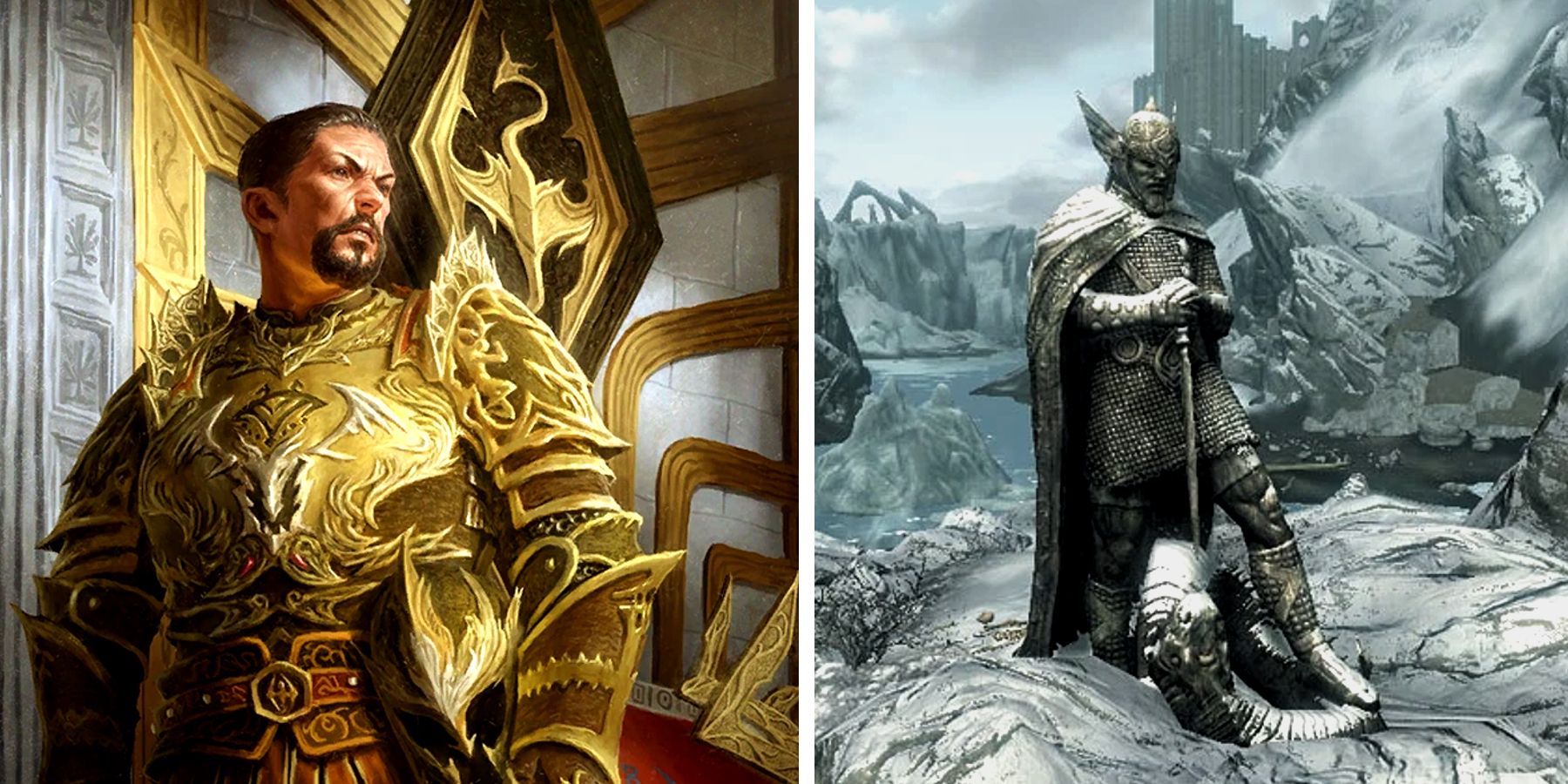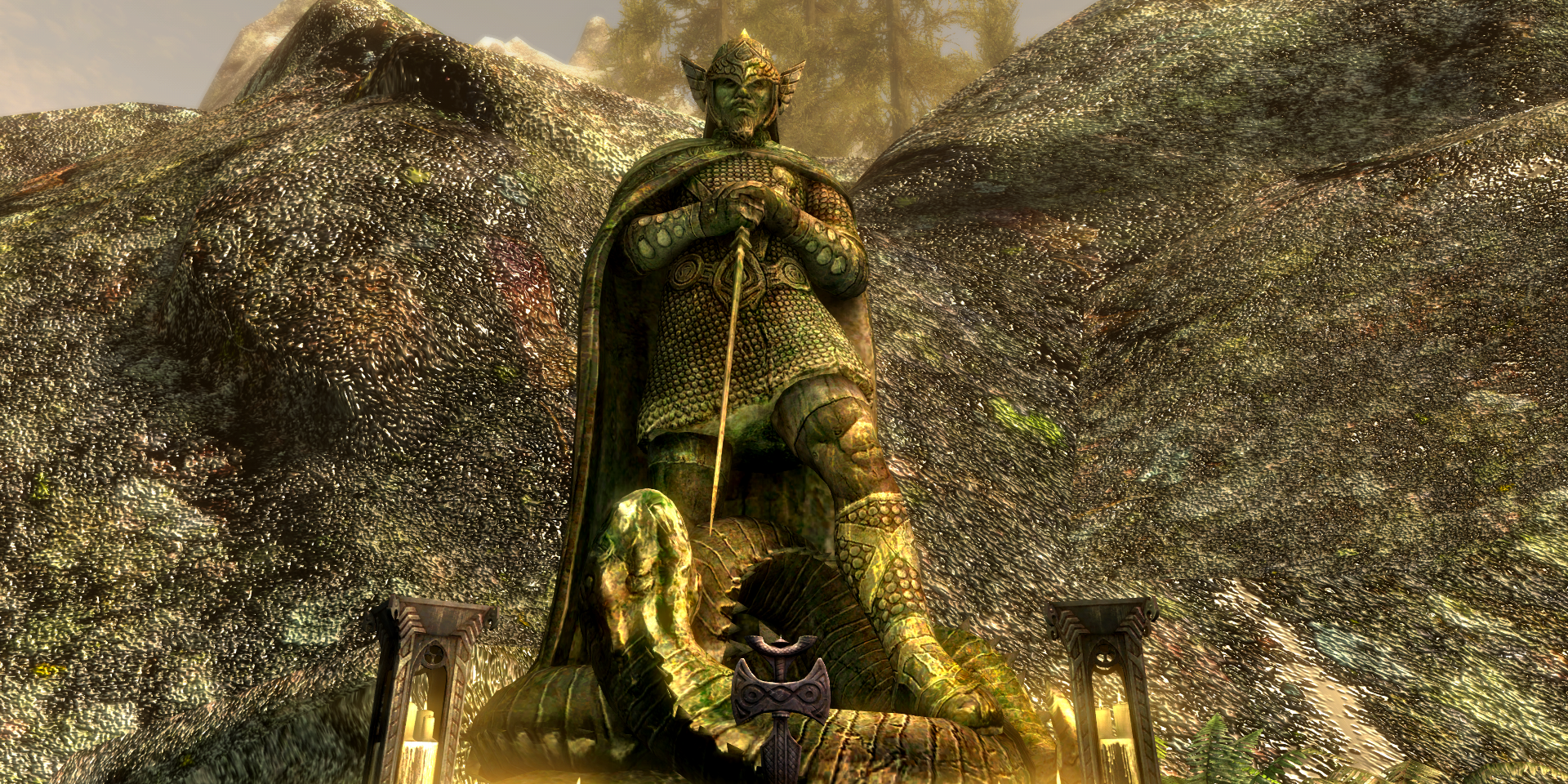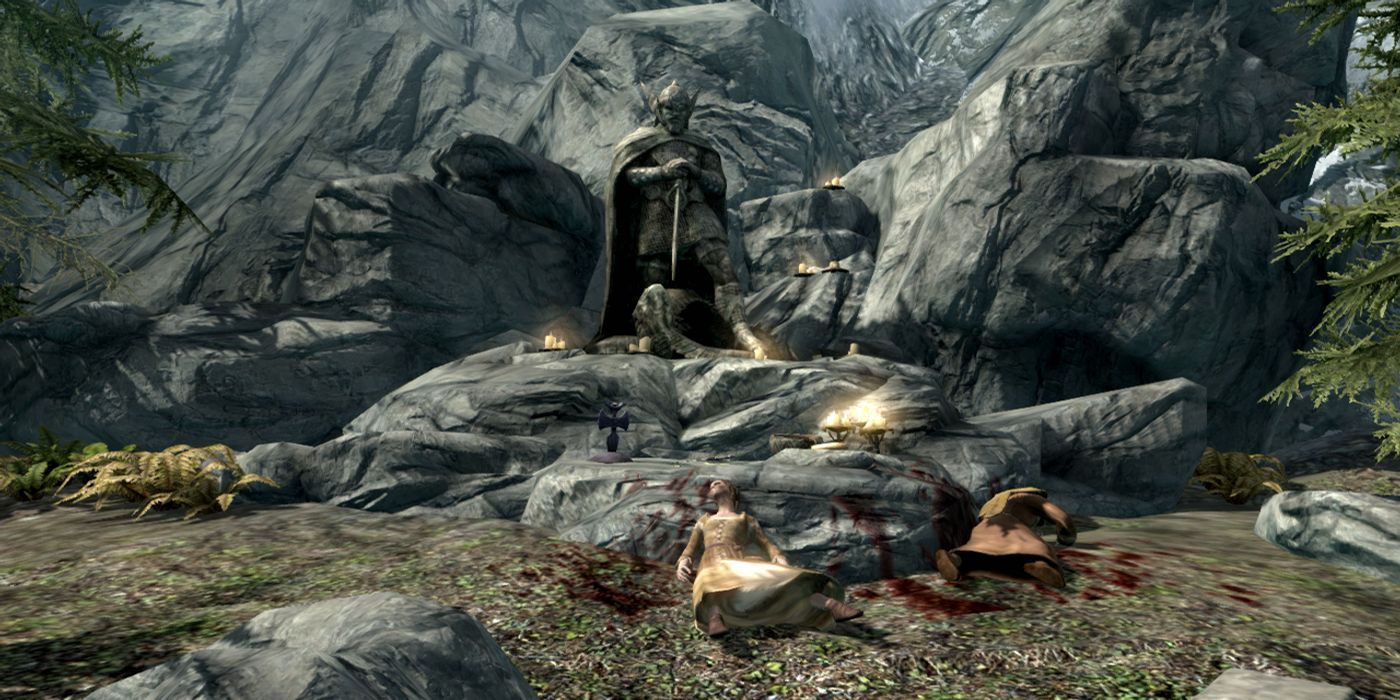Emperor Tiber Septim, otherwise recognized as Talos, lived from the late Second Era to the early Third Era. His deeds and subsequent ascension have cemented him in the lore of The Elder Scrolls. As such, he’s one of the most easily recognizable names in the game.
The late emperor’s early life, however, is still very much surrounded by mystery, and even his deification has been called into question. So, though his influence on The Elder Scrolls world can’t be denied, the late emperor has a complicated legacy.
The Elder Scrolls: The Man That Was Tiber Septim
Before the man became a Divine, he was known by many names — Tiber Septim, Hjalti Early-Beard, and Talos Stormcrown. He was a Dragonborn and the first emperor of the Septim Empire, who sought to unify Cyrodiil and then all of Tamriel in The Elder Scrolls. Little is known about what he did before his rise to power, however, and two primary (yet unproven) theories attempt to elucidate this.
The first and more popular theory claims that Tiber Septim hailed from Atmora, where he was originally named Talos. The young, mortal Talos grew up in Skyrim and learned about combat and warfare there. Sometime in the Second Era, he became General of the Colovian Estates under King Cuhlecain, who sought to conquer Cyrodiil and increase his power. Within a year, General Talos had helped him conquer more than half of the Cyrodilic Empire, owing to his ability to use the Voice. Cuhlecain was crowned Emperor.
However, Cuhlecain and his troops still had to be wary of Skyrim and High Rock — lands that were opposed to living under another Empire. This resulted in the Battle of Sancre Tor, where General Talos led his army to victory against both Nord and Breton troops. This then spurred the opposing forces to attempt an assassination on both the emperor and his general. While the assassin succeeded in killing Cuhlecain, Talos survived and was named the new emperor. He also took on a new name: Tiber Septim.
The second theory instead claims that Tiber Septim was born in the Kingdom of Alcaire in High Rock with the name Hjalti Early-Beard. He also becomes a general under Cuhlecain, but in this narrative, he’s said to be a chosen one, as foretold by the Greybeards. While Hjalti was battling the Reachmen with the Nords of Skyrim, there came one night when a storm “visited” him. This storm supposedly taught him how to use the Voice, and he used it to defeat his foes. His Nord allies then began calling him Talos.
Again, with Hjalti’s help, Cuhlecain managed to unite most of Cyrodiil. However, before he could be crowned emperor, Hjalti assassinated him and took the title for himself. It’s even theorized that Hjalti slit his own throat to throw suspicion off himself. Thus, he took on his new name, Tiber Septim, and began his rule as emperor.
Regardless of which theory is true to history, Emperor Tiber Septim of The Elder Scrolls went on to claim the whole of Tamriel. After defeating any remaining opposition — most notably, the Underking — Tiber Septim became the first-ever ruler of a fully unified Tamriel, which marked the beginning of the Third Era. His time as emperor was also said to have brought about the Golden Age.
Talos, the Ninth Divine
In Year 38 of the Third Era, Tiber Septim perished. Some claim it was due to old age, while others believed it was the result of a fatal wound from his past battles. Regardless, when Tiber Septim passed, it’s said he ascended to Aetherius — home of the Elder Scrolls Aedra, among which are the Divines. And Tiber Septim supposedly became one of them, thus making for Nine rather than Eight Divines.
The specifics of Tiber Septim’s deification are unknown. Many believe that his ascension to godhood was a gift from the Divines of The Elder Scrolls themselves as a reward for his deeds as a mortal. Others also believe that he absorbed the various essences of the dragons that existed during his time, which would explain why the dragons nearly became extinct in the Third Era. Regardless, Tiber Septim’s deification would bring about many worshippers, but plenty of opposition too.
Talos’ Legacy in The Elder Scrolls
The people worshipped Tiber Septim — now Talos in godhood — as a deity of governance. However, in the Fourth Era, the Aldmeri Dominion would push the people of the Empire to outlaw the worship of Talos. There are many potential explanations for the Thalmor’s demands in Skyrim, the most notable being that they don’t want a mortal who conquered elven lands to be a widely worshipped deity. Another reason is more strategic — by outlawing Talos worship, the Thalmor would divide the Empire. In Year 175, Emperor Titus Mede II signed the controversial White-Gold Concordat. Though this ended the Great War, it spurred Thalmor troops to hunt down any remaining Talos worshippers, including the Blades.
Meanwhile, in Skyrim, civil unrest was brewing as Ulfric Stormcloak — a staunch believer of Talos — was appalled by the Empire’s actions. He fought for the restoration of Talos worship within Skyrim, which led to his capture and imprisonment in more than one instance. Eventually, Ulfric banded together with fellow Talos worshippers and led a Skyrim movement known as the Stormcloak Rebellion. His group sought to drive out the Empire and its allies in order to allow the worship of Talos again.
At the same time, the Last Dragonborn made their presence known, prompting the Greybeards to call out for them. If the second theory on Tiber Septim is to be believed, then this was the first time since the rise of Talos that the Greybeards publicly spoke again. Should the Skyrim player choose to side with the Stormcloaks during the events of the civil war questline, then they’ll likely have a hand at bringing back Talos worship to the land. On the flip side, joining the Imperial Legion will reverse the effects of Tiber Septim’s deification, making the Nine into the Eight once again.
Skyrim is now available for PC, PS4, PS5, Switch, Xbox 360, Xbox One, and Xbox Series X/S.


.jpg)

